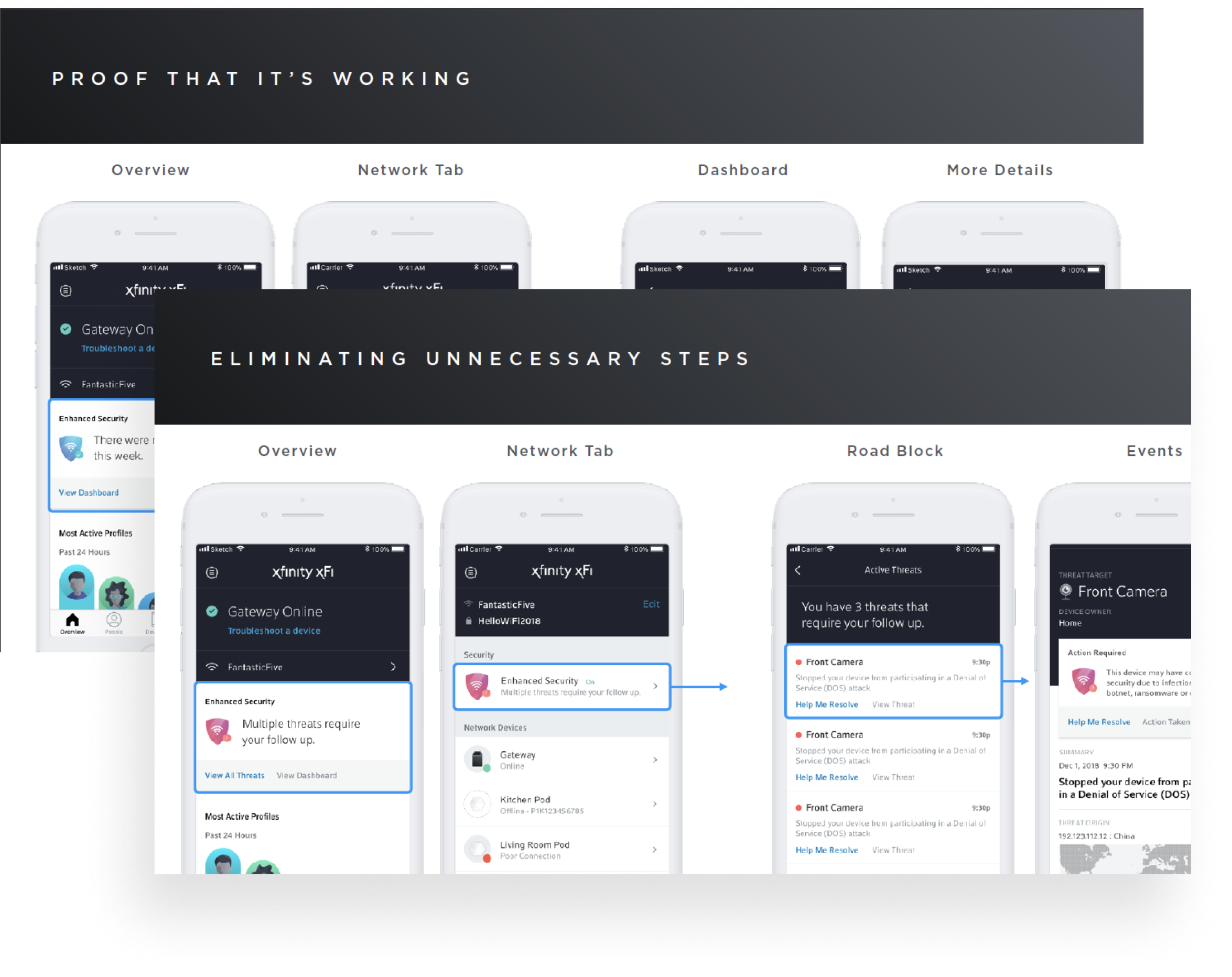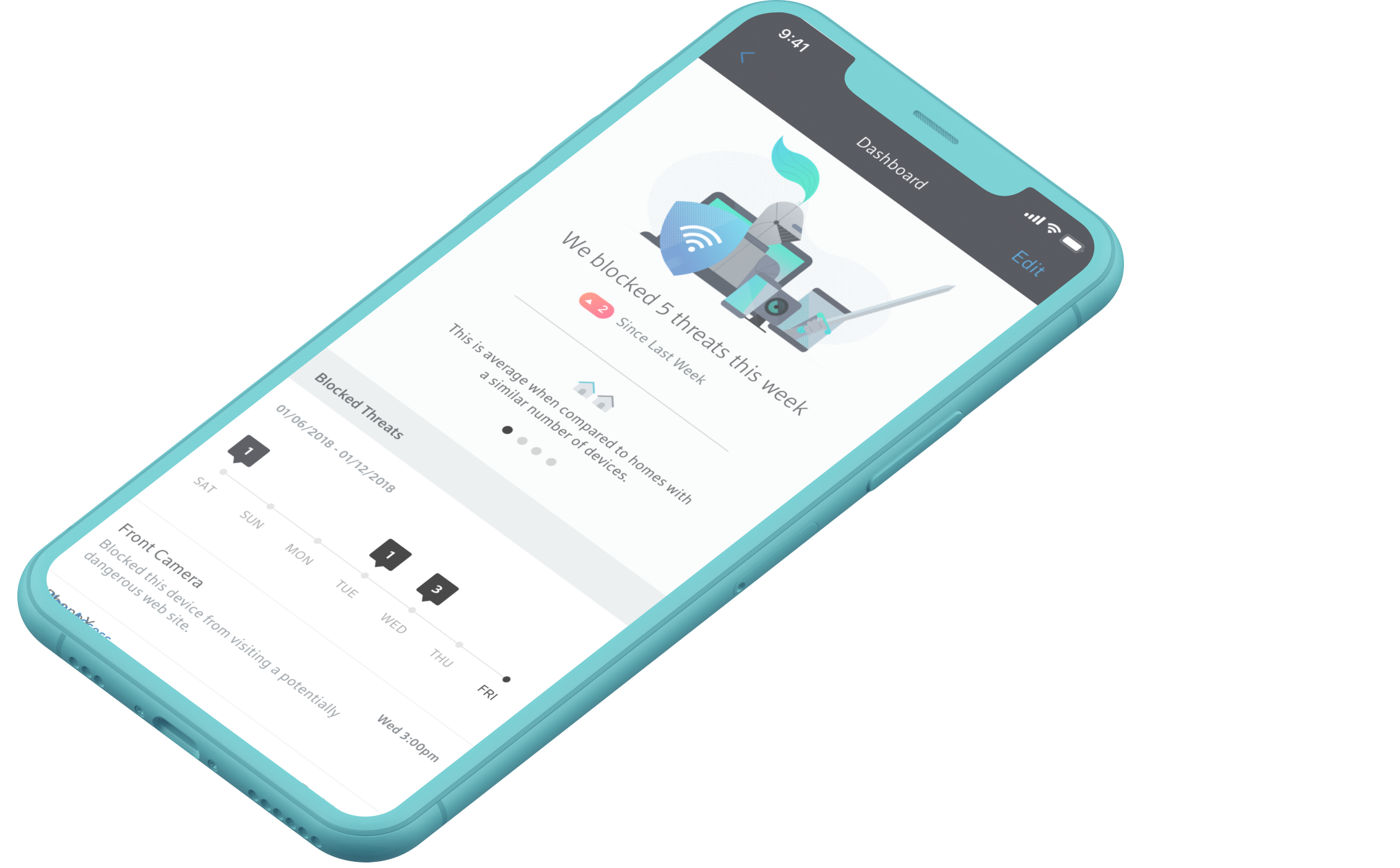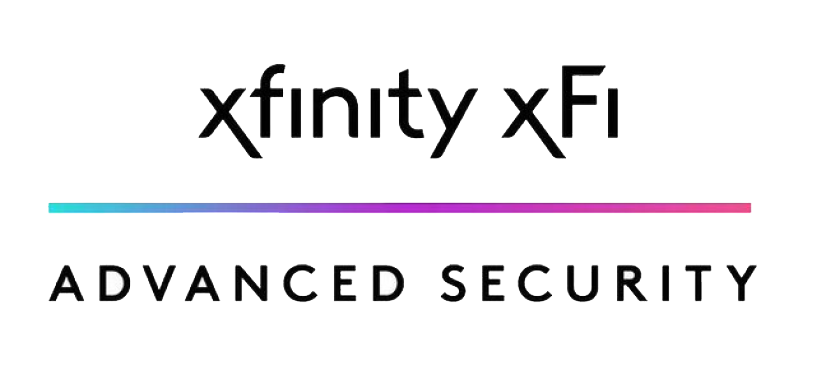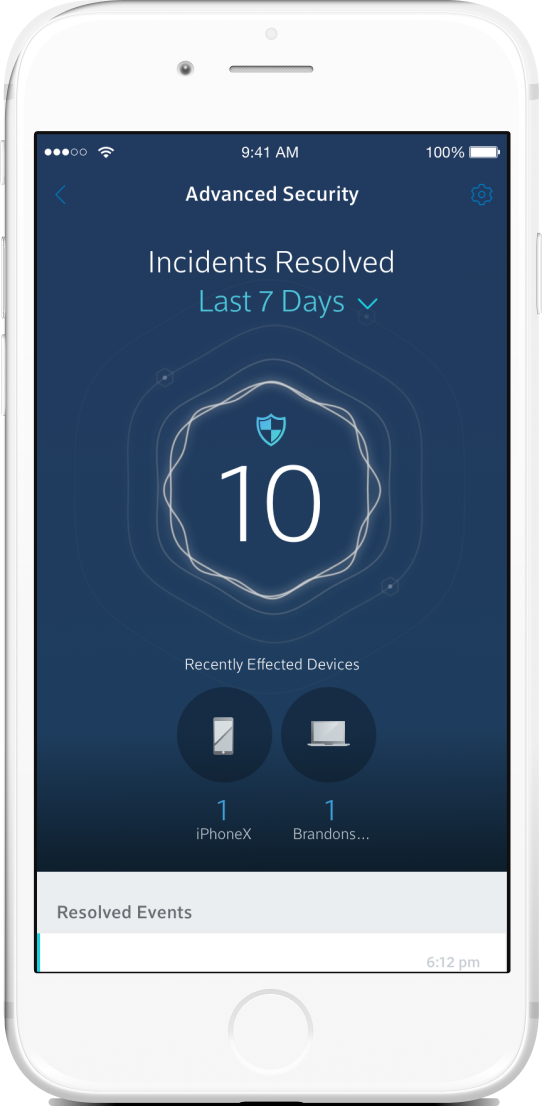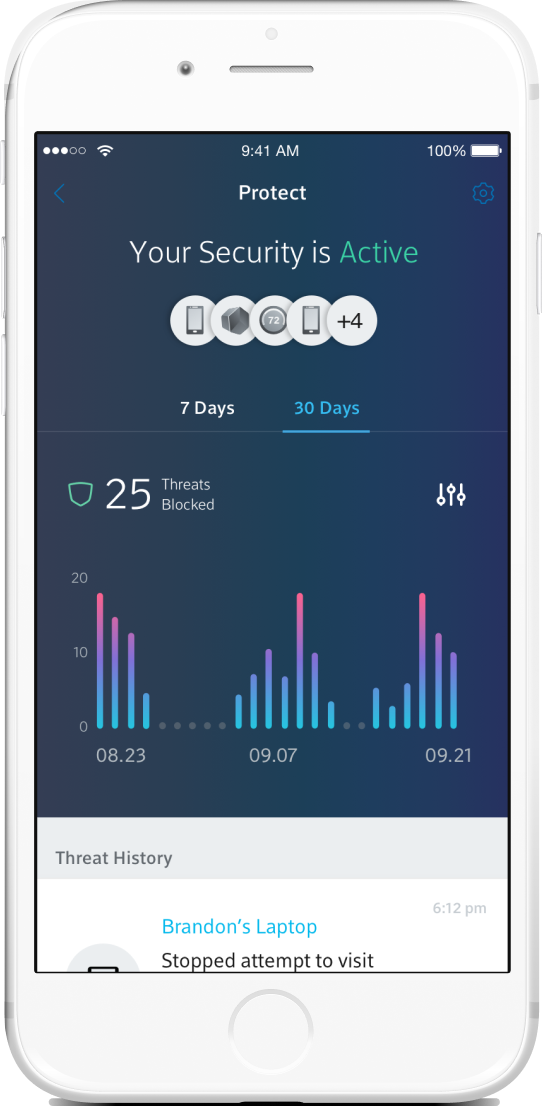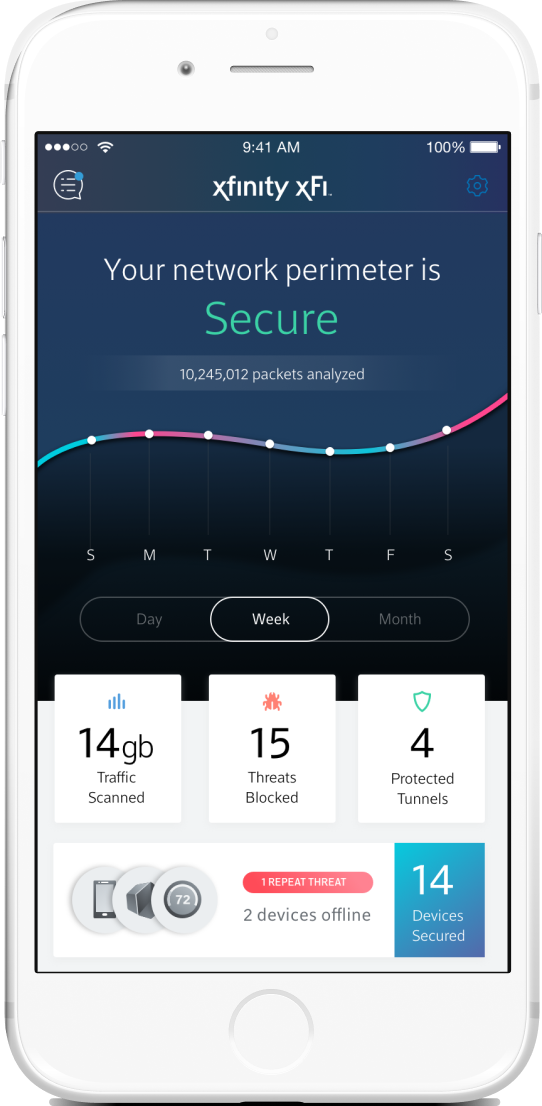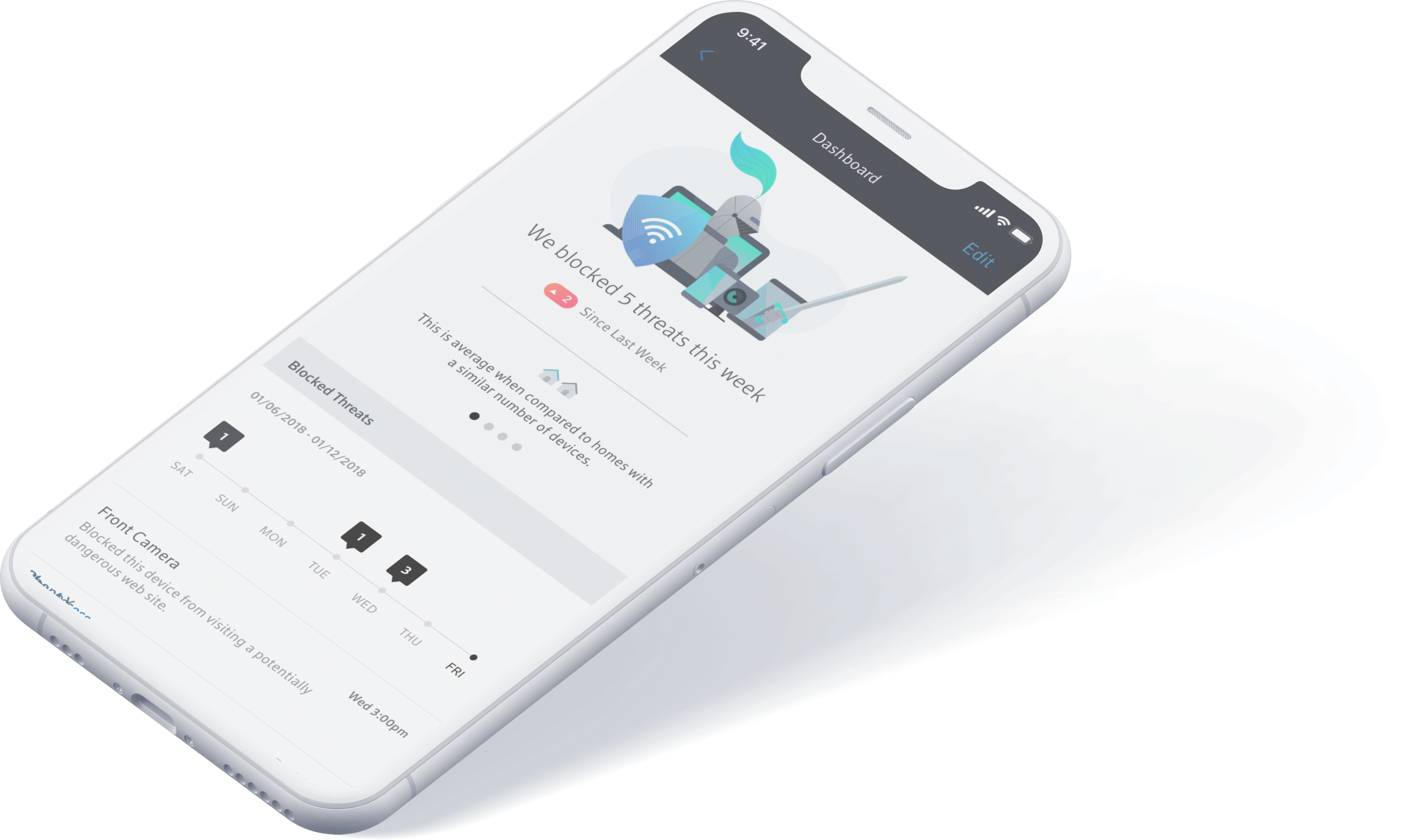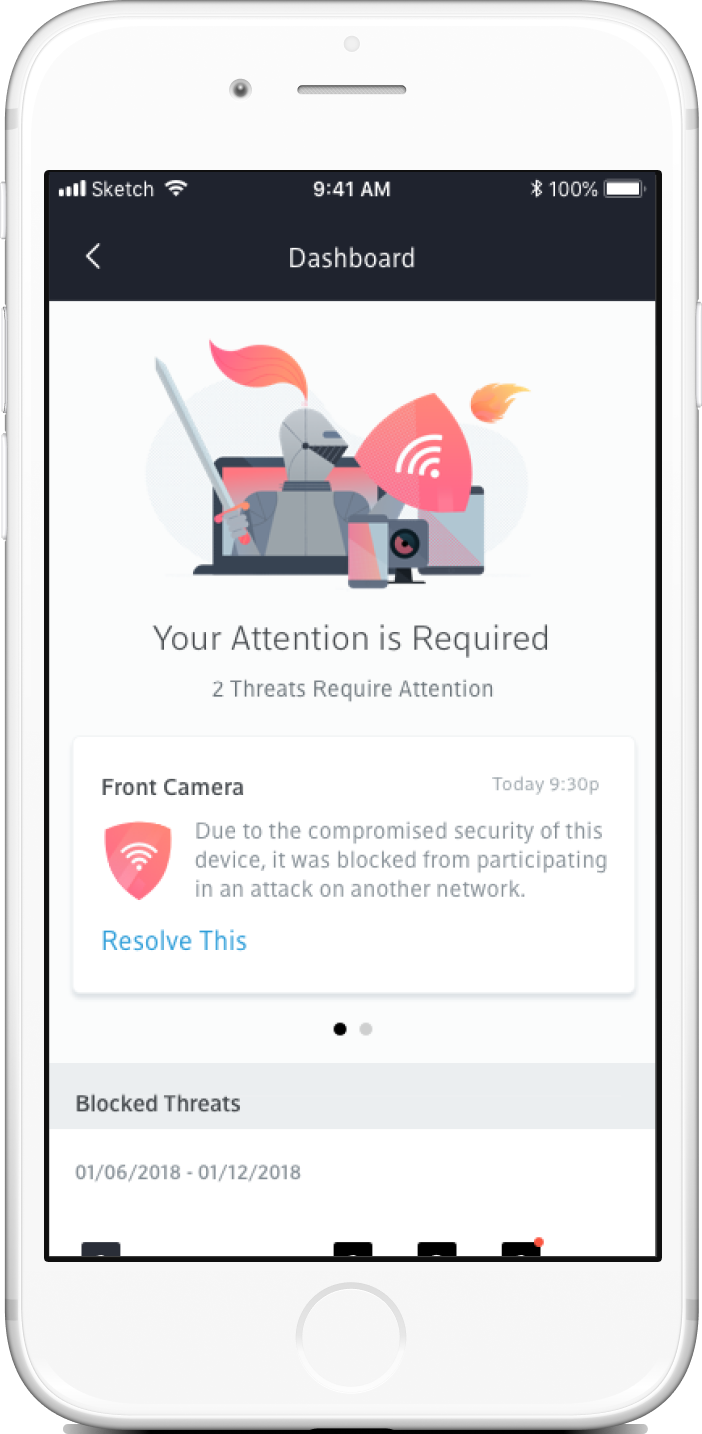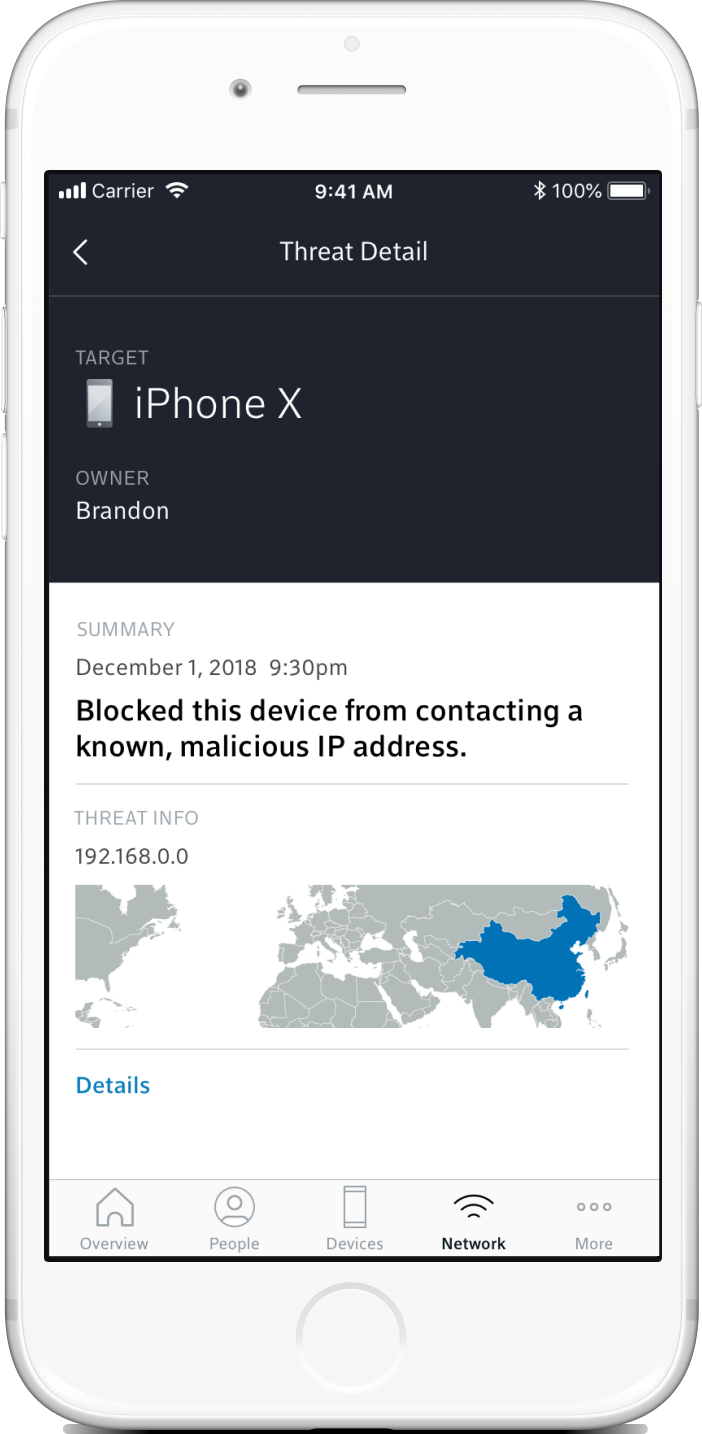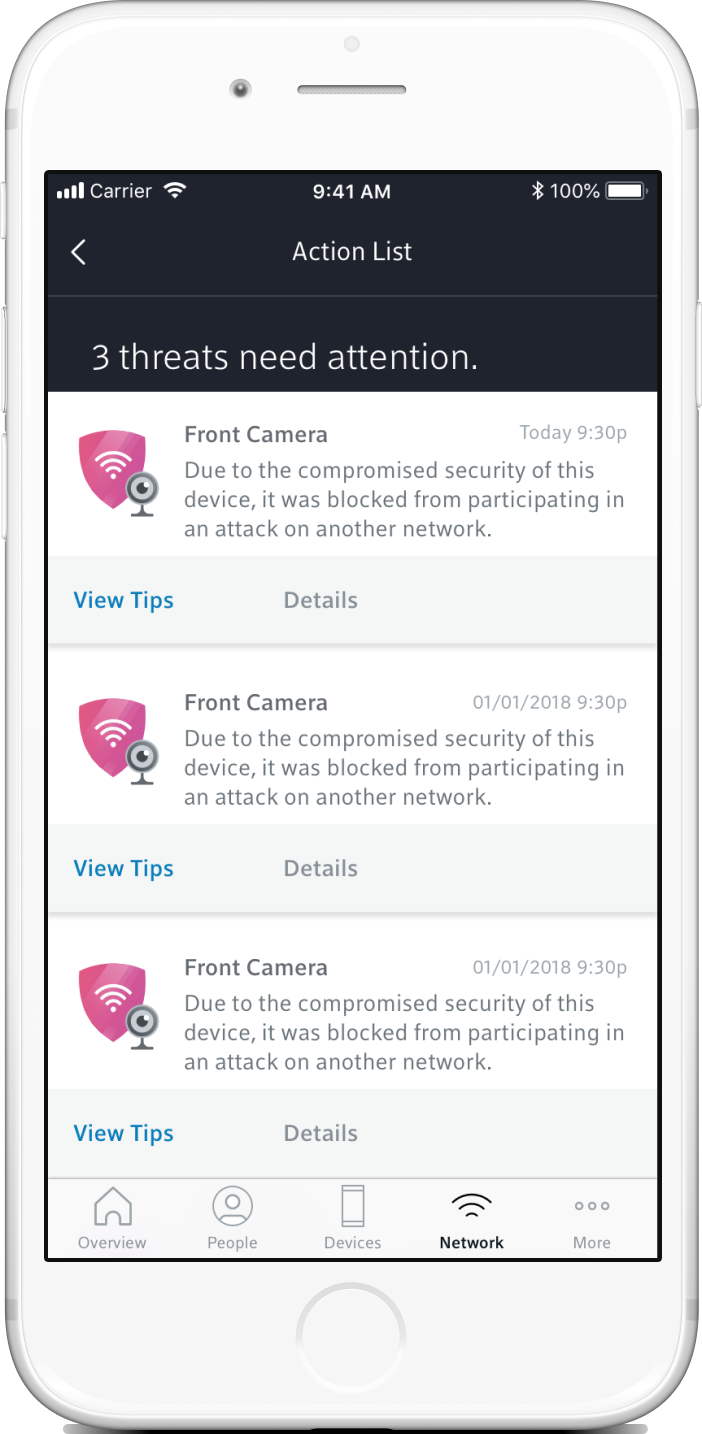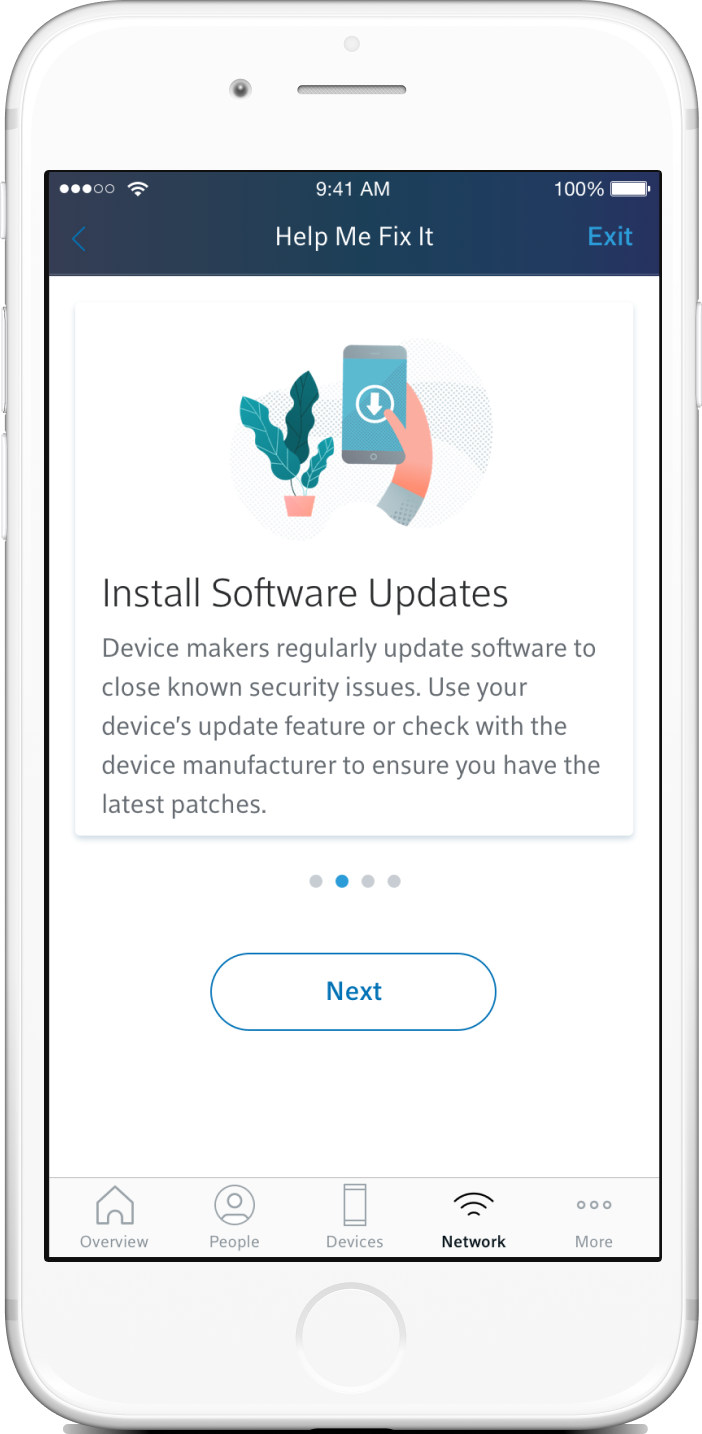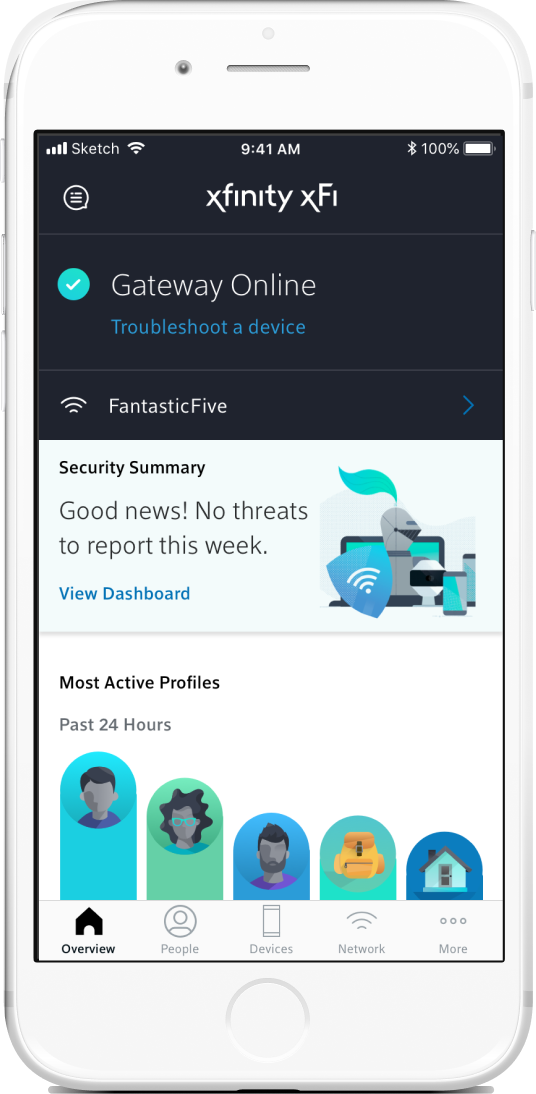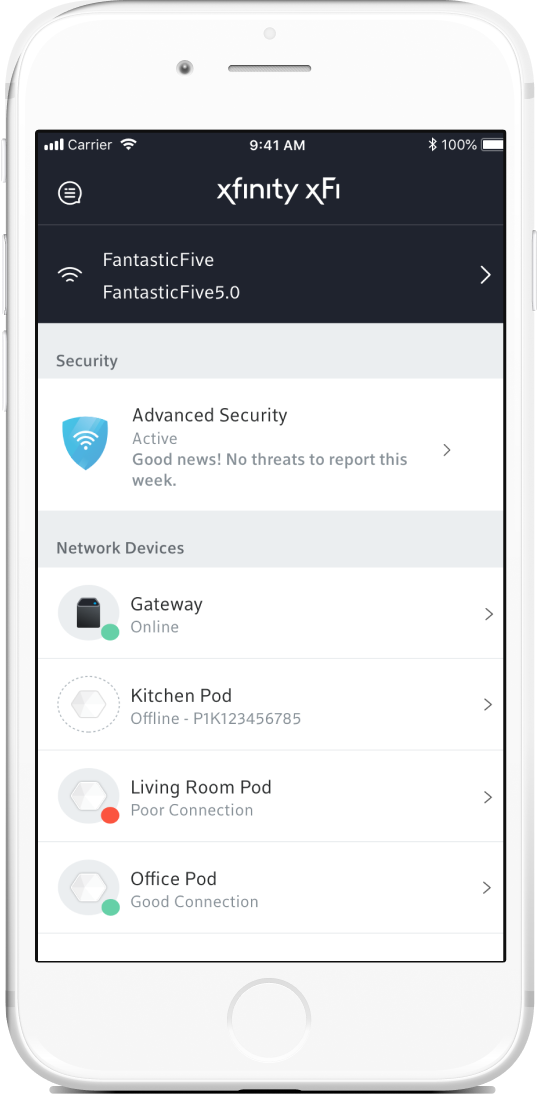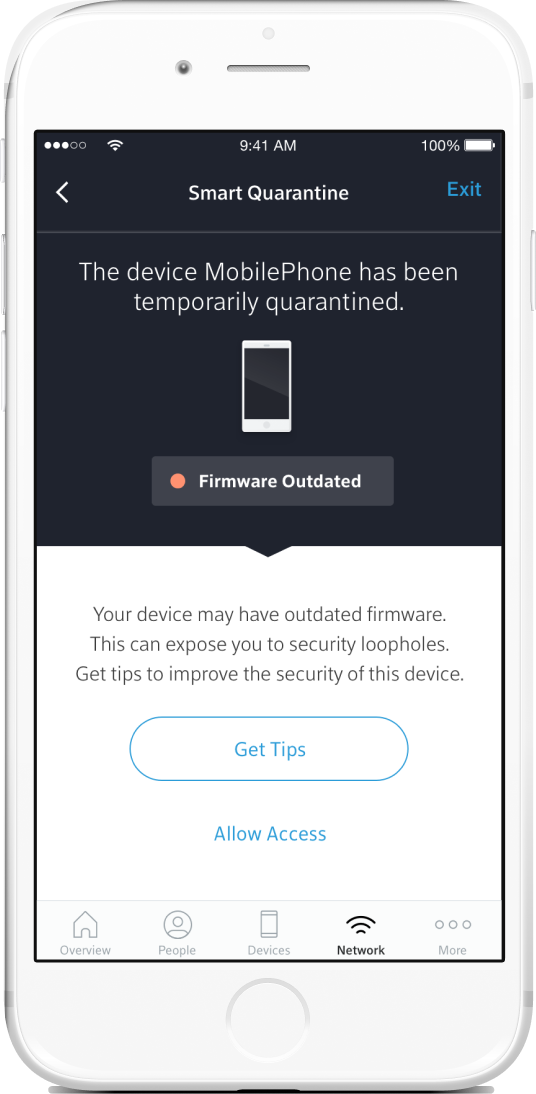I did a full competitive analysis of similar products in the market to analyze their approach.
There were similar products in the market, but with complicated UX as a result of the sidecar hardware and additional software. The partnership with CUJO allowed us to build security right into the Gateway.
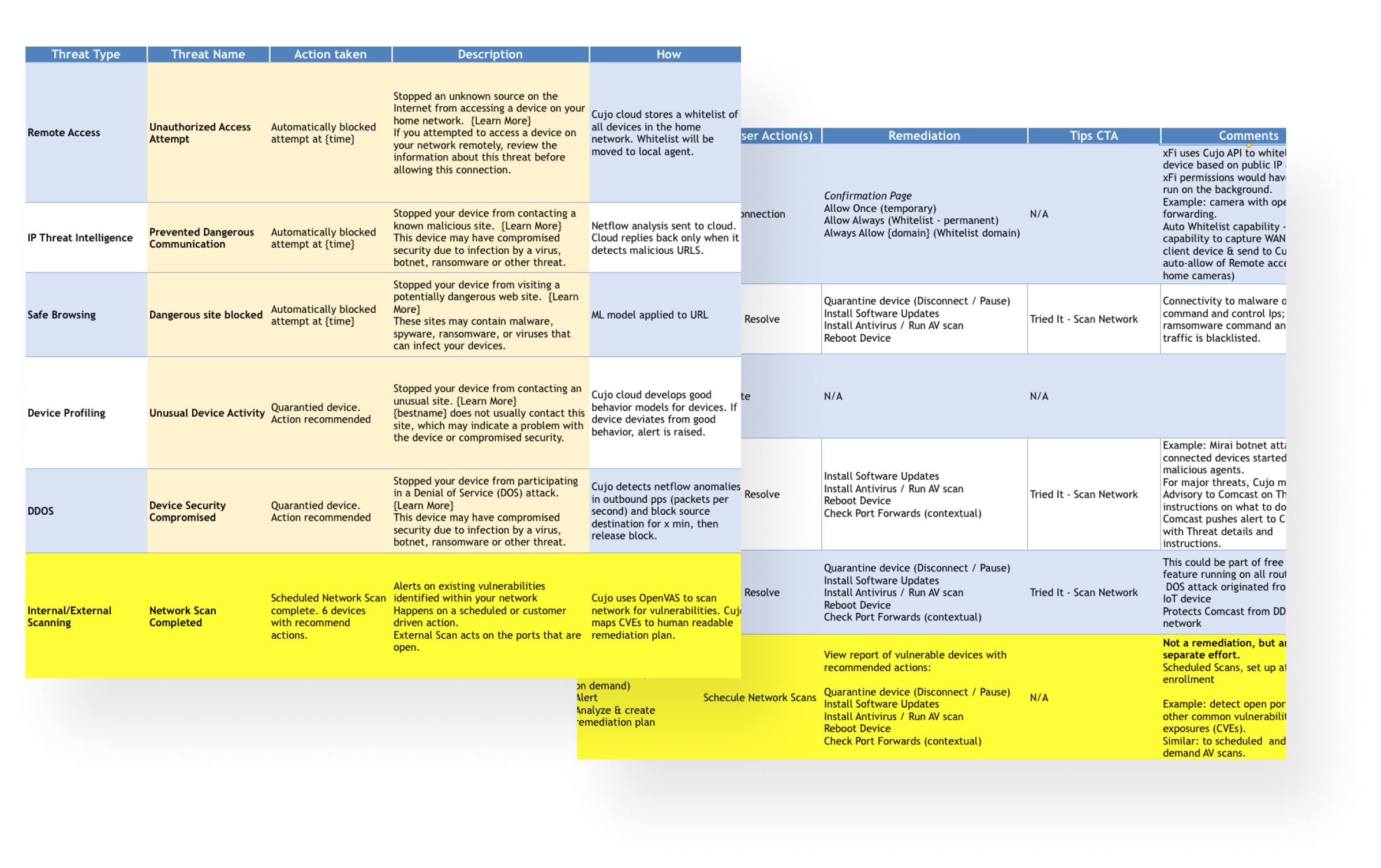
xFinity Mobile is a comprehensive application with many moving parts. It was important to determine early-on where the feature would sit in the ecosystem, and estimate other touchpoints that may be effected by Advanced Security.
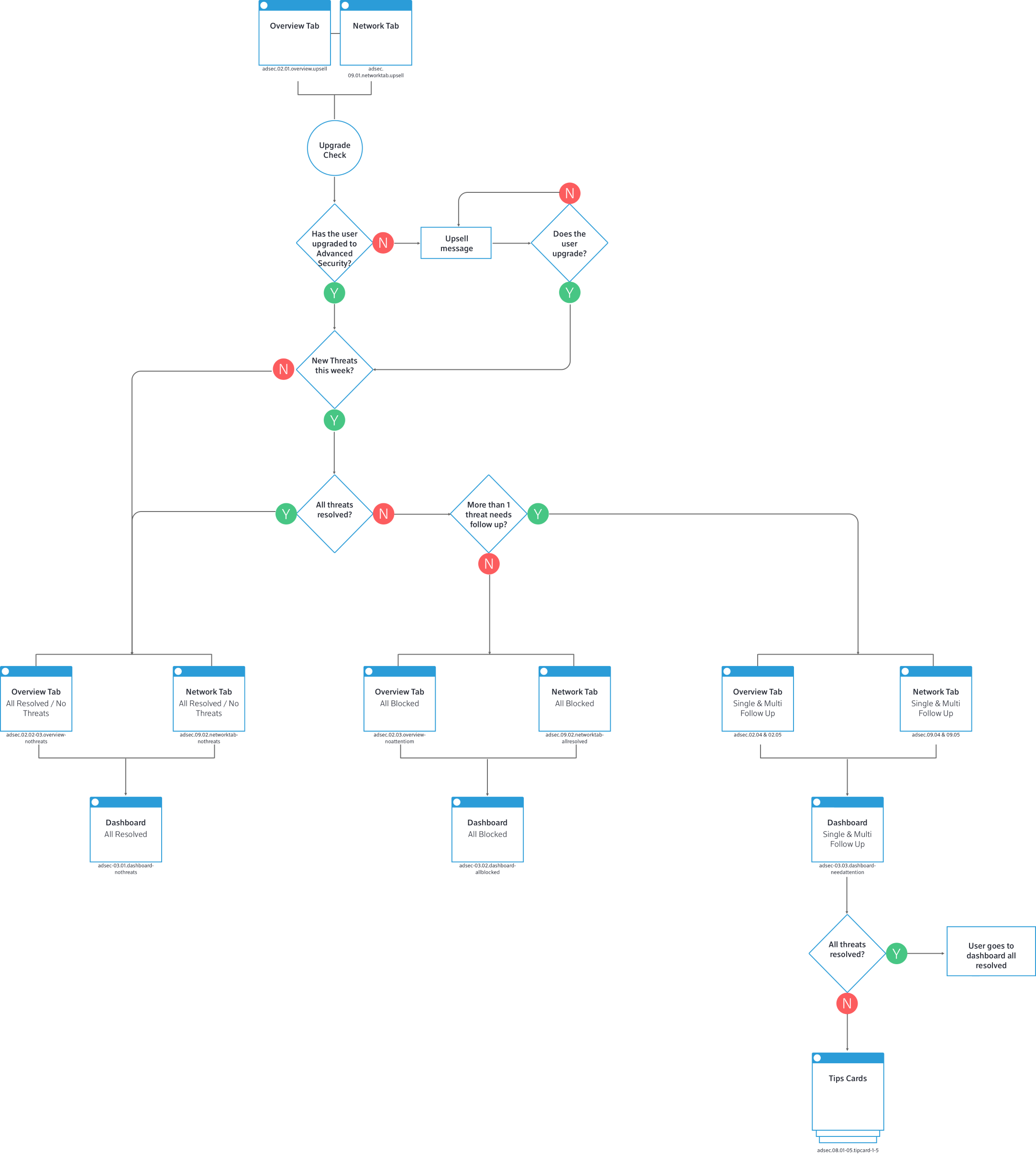
We wanted to verify some of our assumptions, so we put the MVP through a series of tests with a focus group. We wanted to investigate language, design approach, and content comprehension.
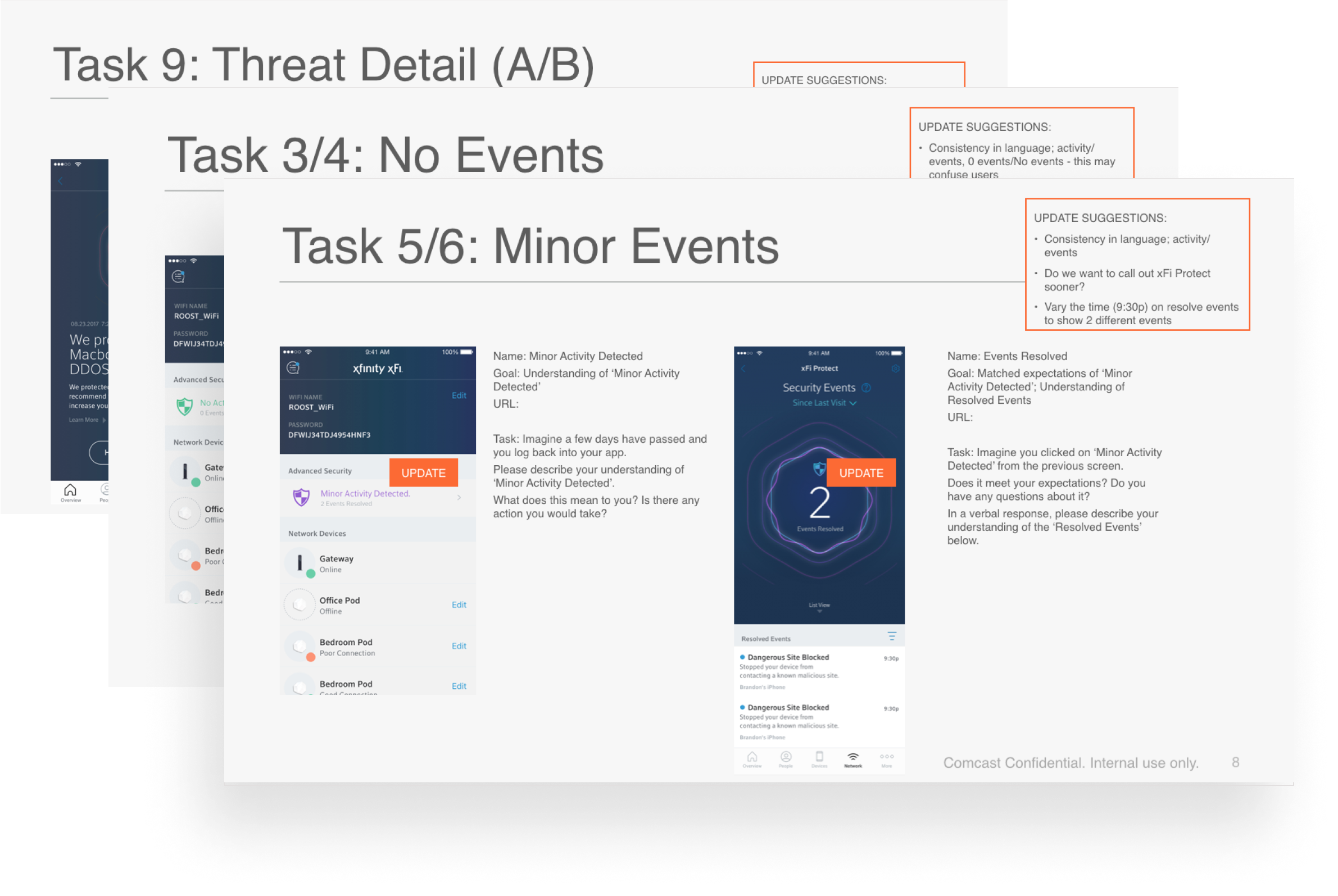
Customers have a device-centric, rather than network-centric view of their home network. We’ll have to position the service to speak to device-level protections, make comparisons to antivirus software, and acknowledge this mindset in the UX at the device level.
Customers saw clear benefits in the service including: protection of all devices, no software orhardware to install, and the convenience of a mobile app.
The app experience must:• Clearly explain the service• Provide proof that it’s working and continually deliver value• Provide necessary threat information in the initial threat view, eliminating unnecessary steps
